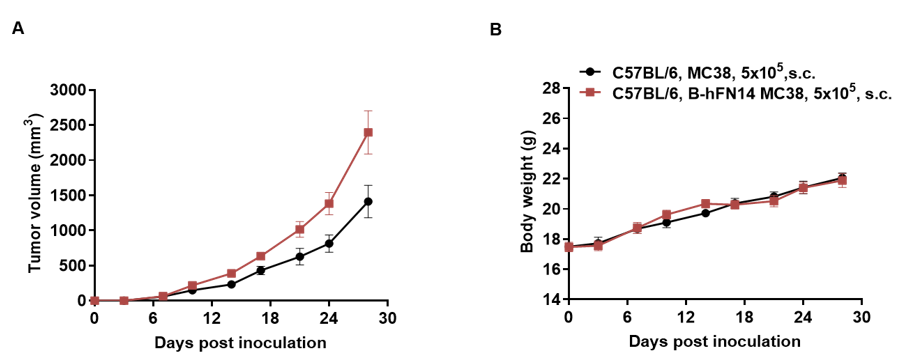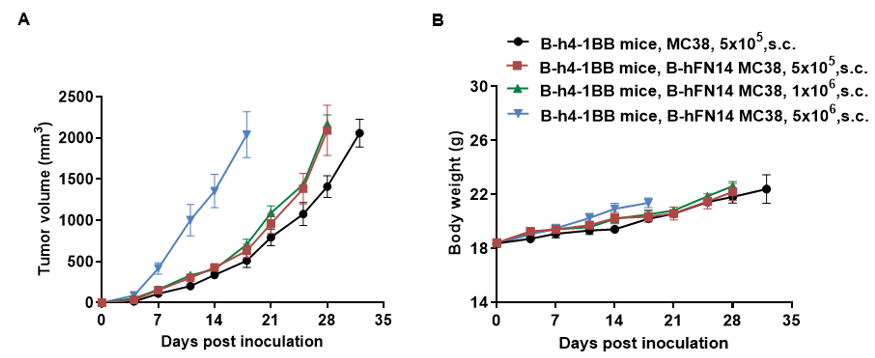|
Common name |
B-hFN14 MC38 | Catalog number | 311053 |
| Aliases | TNFRSF12A;FN14; CD266; TWEAKR; | Disease | Colon carcinoma |
|
Organism |
Mouse |
Strain | C57BL/6 |
| Tissue types | Colon | Tissue | Colon |
Description
Gene targeting strategy for B-hFN14 MC38 cells. The exogenous promoter and human FN14 coding sequence was inserted to replace part of murine exon 1 and all of exons 2-4. The insertion disrupts the endogenous murine Fn14 gene, resulting in a non-functional transcript.
Protein expression analysis

FN14 expression analysis in B-hFN14 MC38 cells by flow cytometry. Single cell suspensions from wild-type MC38 and B-hFN14 MC38 cultures were stained with species-specific anti-FN14 antibody. Human FN14 was detected on the surface of B-hFN14 MC38 cells but not wild-type MC38 cells. The 3-G11 clone of B-hFN14 MC38 cells was used for in vivo experiments.

Protein expression analysis of tumor cells


Subcutaneous homograft tumor growth of B-hFN14 MC38 cells. B-hFN14 MC38 cells (5x105, 1x106, 5x106) and wild-type MC38 cells (5x105) were subcutaneously implanted into B-hCD3E mice (female, 7-week-old). Tumor volume and body weight were measured twice a week. (A) Average tumor volume ± SEM. (B) Body weight (Mean± SEM). Volume was expressed in mm3 using the formula: V=0.5 X long diameter X short diameter2. As shown in panel A, B-hFN14 MC38 cells were able to establish tumors in vivo and can be used for efficacy studies.
Tumor growth curve & Body weight changes

Subcutaneous homograft tumor growth of B-hFN14 MC38 cells. B-hFN14 MC38 plus cells and wild-type MC38 cells were subcutaneously implanted into B-h4-1BB mice (female, 9-week-old, n=6). Tumor volume and body weight were measured twice a week. (A) Average tumor volume. (B) Body weight. Volume was expressed in mm3 using the formula: V=0.5 X long diameter X short diameter2. As shown in panel A, B-hFN14 MC38 cells were able to establish tumors in vivo and can be used for efficacy studies. Values are expressed as mean ± SEM.








